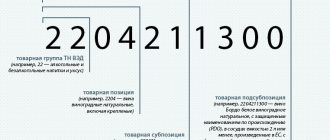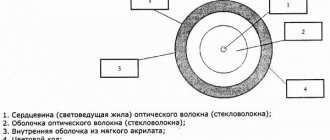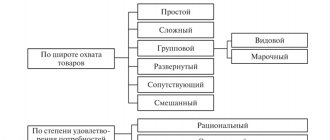List of documents required for importing goods into the territory of the Customs Union Commodity nomenclature of foreign economic activity To assess customs duties and savings when importing goods into the territory of the Customs Union, it is very important to choose the correct code of the foreign trade code. In order for your cargo to pass customs, you need to make certificates and a declaration for your products. We have classified the necessary information for you:
- Code Description
- Permit documents for import of cargo
- Required documents for export 84
- Duty and VAT rate
Export documents 8311 10,000 9
| Permission | Required | Description |
| Duty | No | |
| Phytosanitary certificate | No | |
| Veterinary certificate | No | |
| Radiation Safety Certificate | No | |
| Licensing | ! may be required | The product does not require licensing, except for those included in the List of Cultural Property and National Documents. archival funds, original archival documents and having the following characteristics: 1. Cultural values included in the museum, archival and library funds of the member states of the Eurasian Economic Union Decision of the EEC Board No. 30 of 04/21/2015 |
| Quotas | No |
Import documents code 8311 10 000 9
| Permission | Required | Description |
| Quotas | No | |
| Preferential treatment | No | |
| Duty | 17 % | Decision of the EEC Board No. 85 of 06/02/2015 |
| Special duty | No | |
| Anti-dumping duty | No | |
| Countervailing duty | No | |
| Excise tax | No | |
| Deposit | No | |
| VAT | 20 % | Federal Law No. 117-FZ of July 7, 2003 |
| Certificate of product compliance with national standards | No | |
| Declaration of product conformity with national standards | No | |
| Certificate of Conformity of the Customs Union | No | |
| Certificate of product compliance with technical regulations | No | |
| Certificate of state registration | No | |
| Phytosanitary certificate | No | |
| Veterinary certificate | No | |
| Licensing | No | |
| Quotas | No | |
| Quotas | No | |
| Classification decisions | Register of preliminary decisions on classification |
Still have questions?
You can find out more information about the HS code for foreign economic activity or what documents you need to import cargo by calling 8 (499) 350-14-21 (Irina) or by mail
Classification of machine parts of groups 84 and 85 HS, as well as parts and accessories of group 90 HS
21.07.2016
Webinar from 06/16/2016
Lecture on the topic: “Features of the classification of machines of groups 84 and 85, as well as parts and accessories of group 90”
Read by: Yuri Andriyanov (Yu.A.) – deputy head of the department for maintaining and developing the Commodity Nomenclature of Foreign Economic Activity of the UTN FCS
Yu.A. Good afternoon. The topic of today's question is the classification of complex goods and classification decisions.
A little history. Since the Russian Federation is a member of the International Convention on the Harmonized System, in accordance with this convention our nomenclature necessarily contains the basic rules of interpretation, codes of the harmonized system and a description of these commodity items/subitems, i.e. on the first six signs, fully consistent with the harmonized system.
The basic rules of interpretation are determined, first of all, by the first rule that classification is carried out based on the texts of commodity items and the corresponding notes to groups, sections, and positions.
Most often, the question of classification arises not so much of the equipment itself, but rather of the parts of the equipment. Our lecture itself is devoted to the peculiarities of the classification of parts for machines and equipment of groups 84, 85 and 90.
Speaking about the first rule, we immediately mean Notes to sections and groups.
Note 1 to section 16 says which goods cannot be included in section 16, and note 2 explains the classification of parts of machinery and equipment that are classified in group 84, 85.
It sounds verbatim, as you see on the screen it is completely depicted, this is subject to the provisions of note 1 to section 16, note 1 to group 84 and note 1 to group 85 - parts of machines, products, headings 84, 85 must be classified according to the following rules .
Let us turn again to the phrase: “in accordance with Note 1”.
In Note 1 to Section 16, we immediately give an exception - parts of machinery and equipment of groups 84.85 are never included, rubber products, conveyor belts, leather products, parts made of base metals, similar plastic products. If we consider a screw, bolt, nut, spring to be a part of general purpose, then such parts will never be classified in group 84.85 because, in accordance with the first note, they are not part of these goods.
84 groups further, if we start looking. It does not include: millstones; whetstones and other articles of Chapter 68; equipment and devices made of ceramics; glassware; household electromechanical products; goods, machines of group 84.85; vacuum cleaners are all excluded.
Why is this being said? For example, if you have a ceramic bearing or a ceramic pump, it would seem that these are mechanical products, either a bearing or a pump, but you can never classify it in group 84, since there is a direct exception that these goods will be classified as ceramic products in group 69.
The next slide shows examples of such products: a bearing, a pump, a ceramic filter.
Further, after note 1, when we have become familiar with which goods we have that do not belong to products and parts of group 84.85, we move on to rule 2 a). It states that parts which are goods included in any of the headings of Chapters 84 or 85 shall in all cases be classified in the headings provided for them all.
What does it mean. For example, you have various parts of a washing machine. I have a bearing, a separate pulley, a motor, a counterweight - in fact, parts of the washing machine. So, our motor will never be classified as part of a washing machine, because it has its own code - electric motors 8501, and in accordance with this note 2 a) to section 16 because it has its own exact code, its own description of the product item , it will not be classified under the parts of the washing machine, but under the code “electric motors”.
The same goes for the bearing. It has its own heading 8482, where sliding bearings and swing bearings are classified, then accordingly it will be classified with code 8482.
There are stitches. These are goods of item 8483. Accordingly, your stand will not be classified as part of the washing machine, but in its own item 8483.
Note 2 b) says that other parts intended for use exclusively or principally with one type of machine or a number of machines of the same heading are to be classified together with those machines or in headings corresponding to 8409 or 8431. Well, look at the headings items that are called “Parts for machines” from such and such a product item to such and such a product item.
And here there is a footnote that parts that are equally suitable for use with heading 8517, 8525-8528 are classified as 8517. This rule just says that if you, for example, are carrying a part of some kind of machine or equipment and see that it does not have its own product item, then accordingly you can classify it as part of this machine. Well, for example, you have an electric motor, or we take the same washing machine. When we have the front cover of the case, the side parts, the lid - it is clear that this is a part of a washing machine, they do not have their own heading in accordance with note 2 b) to section 16, this product will be classified as parts specifically for a washing machine.
Well, the third rule, which says that other parts are classified in headings 8409, 8431 or 8487, 8548 - these are, so to speak, basket headings, which either, as 8439, 8431 above, are called “parts for specific types of machines or equipment” , or “others, not specified elsewhere” - these are 8548, 8487.
For example, we have a computer case. It will be classified 8473, which is called “Parts of goods for commodity item” - classified 8471, 8470, 8472.
Here, when classifying goods, it is necessary to take into account that it is necessary to use explanations for the product nomenclature. The first five volumes of the explanations for the product nomenclature are translations of the explanations for the harmonized system and contain a description of some classification criteria and indicate examples of goods. Why you need to read the explanations. They help to understand which goods fall within the scope of a given heading because they contain descriptions of those goods, sometimes more specific and in greater detail.
For example, we have a split system. It has an evaporator in the indoor unit, and a condenser is installed in the outdoor unit. If you look at the principle of operation, then the principle of operation of a condenser-evaporator is the principle of operation of a heat exchanger, roughly speaking, a radiator. With us, due to the fact that there is a change in the state of aggregation of the refrigerants, i.e. when they evaporate, heat is absorbed from us and the temperature changes accordingly. Many are trying to supply this product as radiators and heat exchangers under code 8419. Several points need to be taken into account here. First of all, the condenser-evaporator itself is a system that is intended primarily for cooling. Air conditioners work on the principle of a refrigerator, but in addition to changing the temperature, they can also change the humidity. As a matter of fact, that is why they are included in a separate heading 8415. Refrigerators, let me remind you, are classified 8418. So, not all radiators and heat exchangers are classified 8419.
If you read the text of the heading itself, you should note that 8419 is classified as industrial and laboratory equipment intended for processing materials with temperature changes. And not all radiators automatically go there.
If you look at the product nomenclature, we classify 8708 as a separate item - automobile radiators.
Group 73 has central heating radiators. These are the same heat exchangers.
If you open the explanations, then within heading 8415 it specifically states that condensers and evaporators are classified as parts of refrigerators 8418. That is. the text of heading 8419, if we look, “heat exchanger”, these are not all heat exchangers, but only certain heat exchangers used in certain industries or in laboratories, and intended for processing materials by certain processes, including temperature.
Other heat exchangers that do not meet the criteria that are indicated in the explanations - the principles of operation of this heat exchanger - 8419, it is written that the heat exchanger contains a certain structure, where two flows move towards each other, one through tubes, the other in the external environment, all this is located in the total volume of, let’s say, a barrel, and is intended taking into account the requirements of the text of the heading for certain industries. So, the condenser-evaporator does not meet these criteria and, accordingly, it should be classified, even if you have a split system, not as part of this system, but as part of the refrigerator, since this is specifically named in the explanations for 8418.
This is due to the fact that when classifying you look at the basic, I repeat again, rules of interpretation, notes to sections, groups and look at the explanations for the specific product items that you have chosen - whether it falls there or not.
In relation to group 90, we also have note 2 to group 90, which is somewhat similar to note 2 to section 16. Same thing, first comes the general exceptions about Note 1 to Group 90, which states that certain goods may never be considered to be part of measuring control equipment that is classified in Group 90. These are tires, equipment of groups 84,85 and other exceptions.
Rule 2 a) itself says the same thing: that parts and accessories that are goods included in one of the headings of groups 84, 85 or 91 are in all cases classified in their own headings.
This rule says that if I have a specific code for an item, then it is classified by that code, and not classified by a piece of equipment.
For example, you have an X-ray tomograph, and an X-ray tube goes to it. The X-ray tube has its own code. Therefore, it is not classified as a part of the tomograph, but rather by its code, like an X-ray tube.
Rule 2 b) for group 90 is similar to rule 2 b) for section 16. It states that parts and accessories intended exclusively for use in a particular type of machine are included with those machines, tools or apparatus.
If we take the same cardiograph. All wires and sensors do not have their own separate code, so they will be considered as parts of specific equipment, in this case a cardiograph.
The 3rd rule to group 90, which says how parts of the goods are classified, says that other parts and accessories that cannot be classified according to 2 and 2 b) to group 90 are classified in heading 9033. I’ll say right away that there are really such parts A little. This means that the part can be used with either one type of Group 90 equipment or another type of equipment. As an example, I can say that on the website of the World Customs Organization the following parts are indicated - control cables on ball bearings. They are not identified as suitable for use with any particular machine, appliance or vehicle and are suitable for use with multiple or Group 90 appliances.
It's basically all about classifying parts. I repeat once again - this is a rather painful question, and there are a lot of comments that arise during customs clearance, and questions from customs officers, respectively, to declarants when checking declarations that the rule for classifying parts is being violated.
I would like to draw your attention to the fact that when classifying, if you are engaged in classification, do not forget about such things as OPI, notes to sections, use explanations for the product nomenclature, which helps to understand the scope of payment for commodity items. This will help both you and us so that there are fewer questions and misunderstandings during customs clearance.







